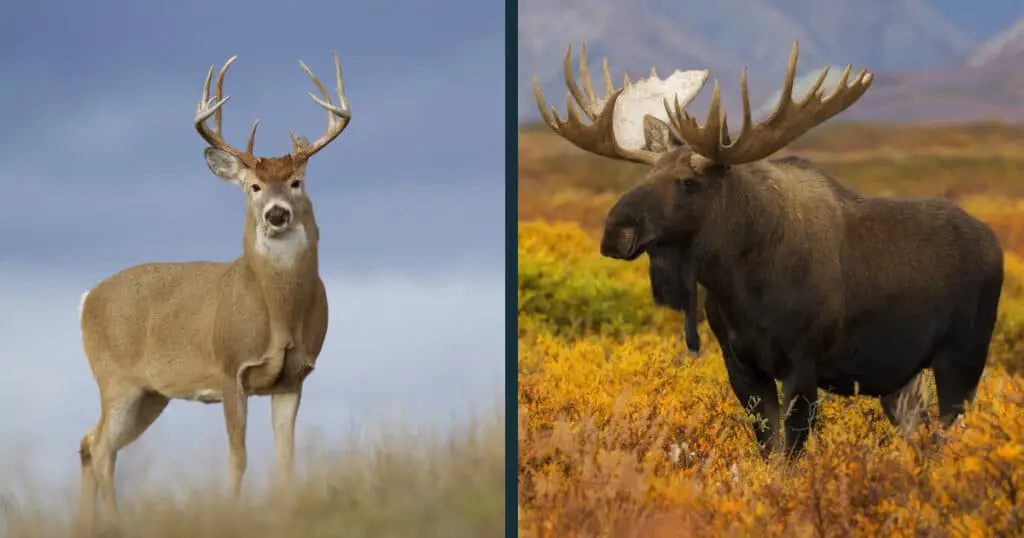If you see a Moose, you might think you’ve just found the world’s largest deer. And you’re technically right – moose are, in fact, part of the taxonomic deer family and they are the world’s largest species of deer. But there are some major differences between moose and other species of deer. These differences are fairly easy to recognize, so if you want to be able to tell moose apart from other types of deer, read our full Moose vs Deer comparison.
Here are the things that distinguish moose from other deer along with some interesting facts about Moose that may change how you view this massive mammal.
What is the Difference Between Moose and Deer?
Table of Contents
ToggleMoose and deer are species belonging to the same taxonomic family (Cervidae), which is also known as the deer family. So, Moose can be accurately considered a type of deer. It’s important to recognize that while all moose are deer, not all deer are moose, and most deer look nothing like moose.
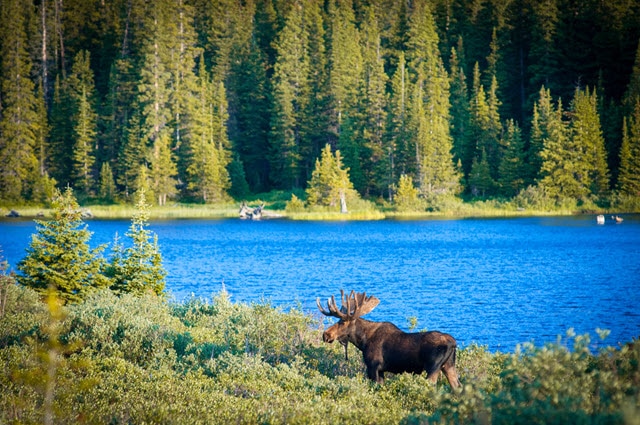
Cervinae vs Capreolinae
The deer family is divided into two sub-categories, Cervinae, otherwise known as old world deer, and Capreolinae, known as new world deer. However, both types of deer can be found all over the world, so the terms old and new world deer can be confusing.
The difference between old and new world deer lies in the ankle bone structure, so you probably won’t be able to see the difference unless you’re looking at a deer’s skeleton.
The Moose is sometimes confused with the North American Elk because the species are among the largest species of deer. British English also does not distinguish between the two species and Alces alces (the Moose) is actually referred to as an elk in Europe.
But in America, the term Elk refers to a different species of deer entirely – one that is sometimes known as the Wapiti.
Moose vs White Tailed Deer vs Elk
Since there are so many different types of deer, it would be impossible to give a comprehensive overview of all the distinguishing features of moose against other types of deer, so let’s look at the White Tailed Deer, the elk, and the moose to offer a quick comparison between deer and moose.
The white-tailed deer is the most common species of deer in the Americas, so it is probably the kind of deer you are most familiar with.
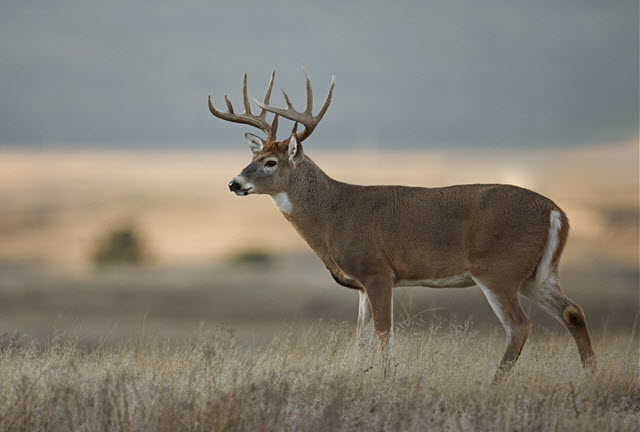
It’s worth mentioning that the statistics in this chart refer primarily to male members of each species.
| Characteristic | White Tailed Deer | Elk | Moose |
|---|---|---|---|
| Size | 3-3.5 ft. | 2.5-5 ft. | 5-6.5 ft. |
| Weight | 150-300 lbs. | 400-1000 lbs. | 850-1,500 lbs. |
| Antlers | Varies, increases with age | 5 ft. | 6 ft. |
| Tail Length | 10-37 cm. | 6-20 cm. | 6-8 cm. |
| Habitat | Americas | North America, East Asia | North America, Eurasia |
As you can see from this table, there are many differences between moose and other common deer species, the most notable being the size of moose when compared with other deer.
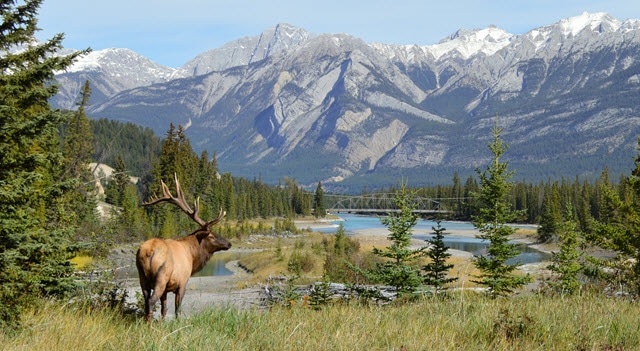
Moose are also unique in that they tend to have a very short tail – much shorter than most other species of deer.
Deer vs Moose Size Comparison
The moose is the largest and heaviest species of deer, normally measuring at about 5-6.5 feet at the shoulder, though they can be taller.
An average adult male moose, known as a bull, weighs on average between 850-1,500 pounds, and female moose, known as cows, between 440-1,100 pounds.
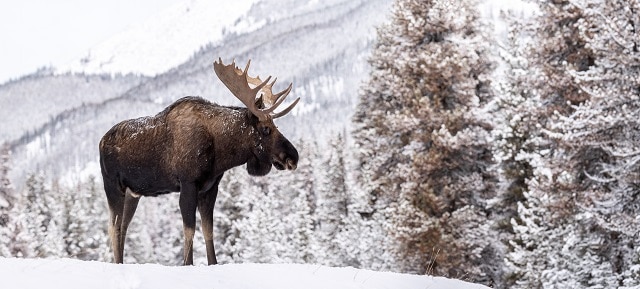
The next largest species of deer is the Elk, and moose are on average about a foot taller.
Other species of deer tend to be significantly smaller, and the smallest species of deer, the Northern Pudu, is only about 13 inches tall.
Deer vs Moose Antlers
Like all species of deer, male moose have antlers.
This is a common trait among all deer, but there are some antler features specific to moose, and moose antlers are the largest of any deer, having a length of up to 80 cm.
Female moose tend to choose mates based on antler size, and after the end of the mating season, bull moose will shed their antlers and regrow them each year in the spring.
Antler growth lasts from three to five months. Moose have distinctive fuzzy antlers, which have a unique velvety quality, which is shed prior to the rut.
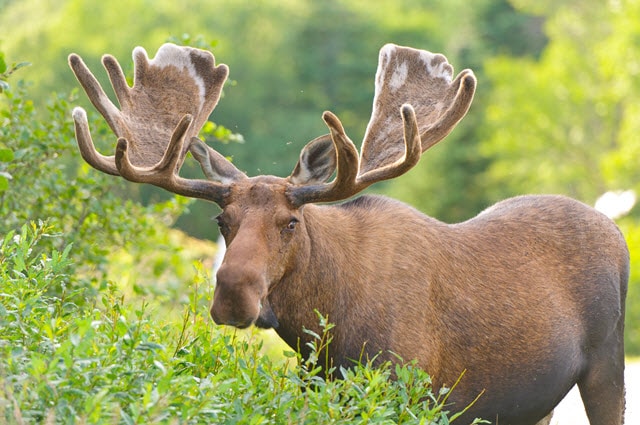
During the winter (after mating season) Moose will shed their antlers. These dropped antlers are highly nutritious, so other animals such as birds and rodents will eat fallen antlers as a source of nutrients. Some moose may also eat their own shed antlers.
Deer Habitat vs Moose Habitat
Deer live throughout the world, whereas moose live exclusively in the Northern hemisphere in North America, Europe, and parts of Asia.
Moose tend to live in areas with seasonal snowfall. During the winter they prefer to stay in areas heavily covered with snow to avoid predators such as wolves. In the summer months, they prefer to stay in the water to keep cool.
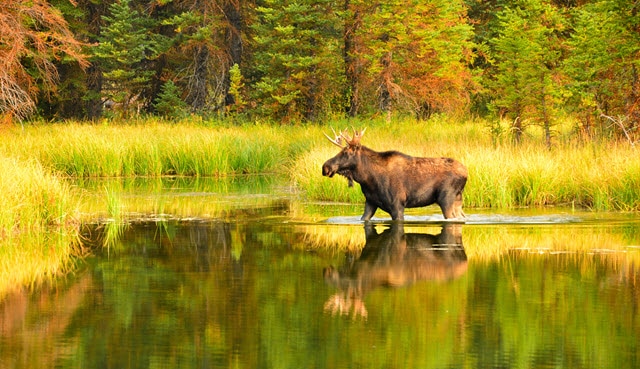
In North America, moose can be found throughout the entirety of Canada and Alaska, as well as some other northern states. Within the contiguous United States, Maine is a good spot to find moose, as it has the highest moose population of any state.
In Europe, moose are to be found in Scandinavia and some parts of the main continent. Prior to the Middle Ages, moose were to be found throughout most of Europe.
In Asia, moose are found primarily in Russia, particularly in Siberia. They can also be found in areas of Mongolia and parts of China.
Can Moose and Deer Cohabitate?
Moose live in the same habitat as other species of deer. However, moose tend to have a different diet than other types of deer, so they are not necessarily in direct competition with one another for resources.
It is also worth noting that though deer and moose can live in the same habitat, they will probably have little interaction with one another. Moose tend to be a very solitary species, whereas other species of deer frequently live in groups called herds.
Moose vs Deer Diet Preferences & Nutritional Needs
The moose is what is referred to as a browsing herbivore, which is different from a grazing herbivore.
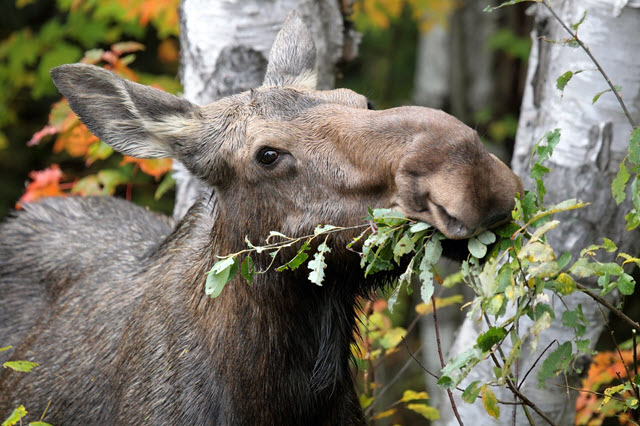
Browsing herbivores primarily eat leaves and tree shoots, whereas grazing herbivores eat plants that can be found lower down and thus be grazed, such as grass. An average moose needs to eat up to 10,000 calories a day to provide itself with enough energy and can eat up to 70 lbs in a single day.
Some other species of deer such as elk are also browsing herbivores, but none consume nearly as much food as the moose.
Moose Mating vs Deer Mating Habits
Unlike other species of deer, moose are for the most part a solitary species. They do not live in herds, and the only time they tend to occupy the same space with other moose is during the rut or the mating season, which occurs in the fall.
The rut is when the male moose compete with one another for female mates, and during this time they will go up to two weeks without eating, which changes the scent of their urine to attract female mates.
During the mating period, both male and female Moose call to each other. The call of the male moose can be heard from up to 500 meters away.
Most male moose will not fight against other males, whereas many species of deer resolve breeding disputes with combat.
That said, there are exceptions, and two bull moose in combat is no joke, especially if it happens in your neighborhood:
Female moose will only select one partner during the mating season, but male moose will choose multiple mates.
Since most deer tend to live in herds, their mating practices differ from those of moose. Many other types of deer spar during the rutting season. This creates a structure among the herd in which the winning buck is the head of the herd.
Moose Predators vs Deer Predators
Since moose are the largest species of deer, they tend to have far fewer predators than their smaller cousins.
Most species of deer have to be on the lookout for a wide variety of animals such as wolves, coyotes, bears, and even alligators (depending upon where in the world they live). Not so with Moose.
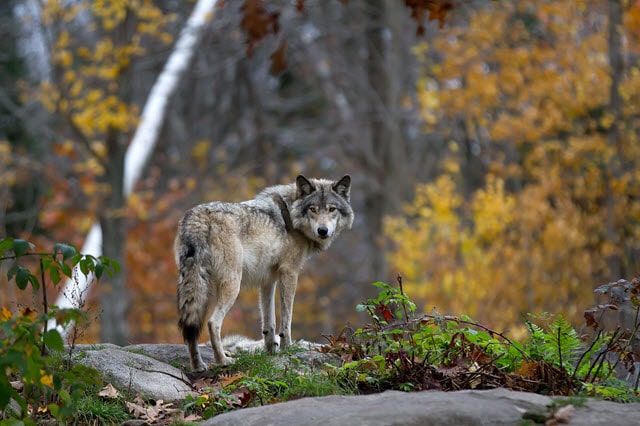
The most threatening predator for the moose is the wolf, but bears may also prey on moose.
That said, bears tend to steal meat after the moose has already been killed by a wolf. Other animals such as wolverines will also try and feed off of dead moose after a kill. In some cases, killer whales have preyed on moose while they swim – something Moose do more than you might think.
Of course, one of the most common predators for both moose and deer are humans, who will hunt both animals for their meat, hide, and antlers.
Final Review of the Difference Between Moose and Deer
Some of the differences between Moose and deer species that they are related to may seem rather technical. If you can’t always keep straight the different mating habits and technical details of moose and deer, you aren’t alone.
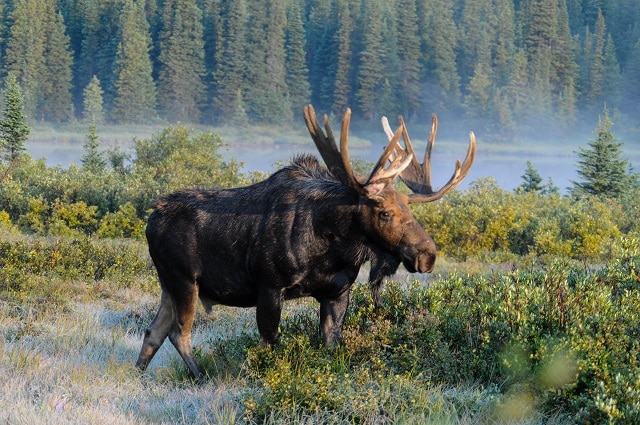
The important thing to remember is that Moose are the largest species within the family of deer and that, thankfully, there is little concern that they will become endangered any time soon.
We can enjoy watching moose and listening to their unique calls for a long time to come.

